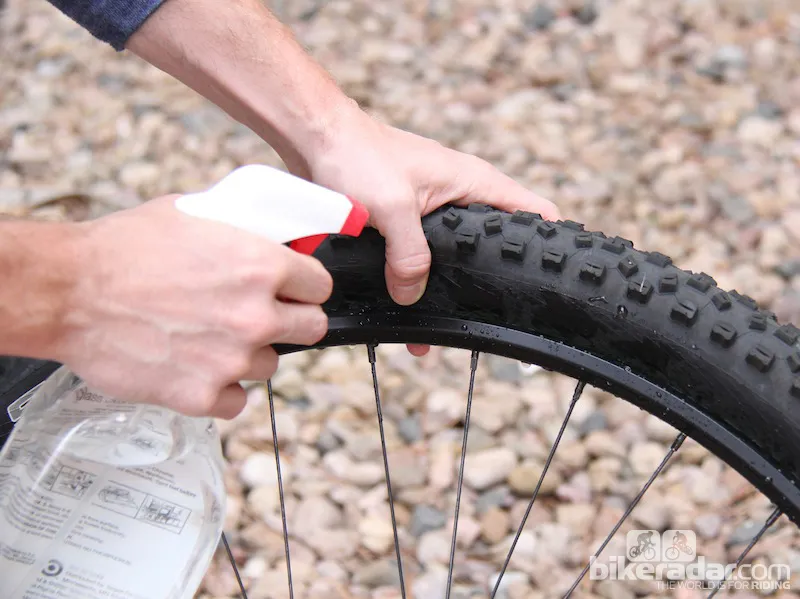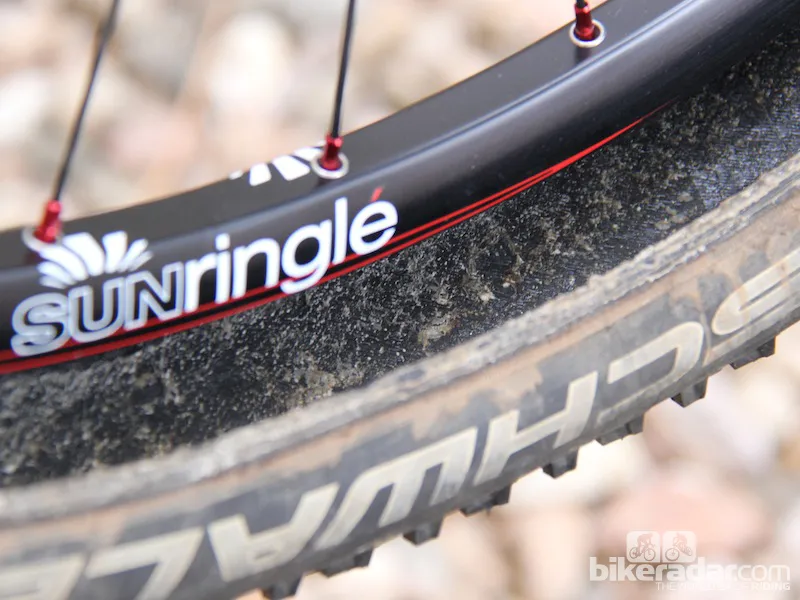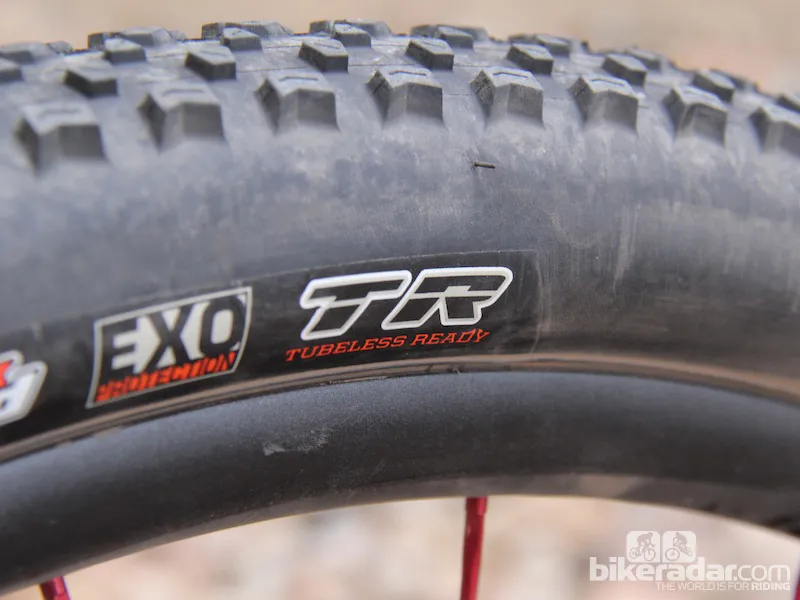Setting up tubeless mountain bike tyres is nothing to be afraid of, but there is an easy way and a hard way to go about it. These five tips will save you the time and headaches that can accompany your first attempt at going tubeless.
1. Use tubeless (UST) or tubeless-ready tyres
This might seem elementary – almost not worth mentioning – except for the fact that many riders (myself included) have been running tyres designed for use with tubes without tubes many years. There’s no shortage of tubeless-ready or true UST tyres available these days (look for the badge), so stick with them for the most dependable tubeless setup.
What’s the difference between UST and tubeless-ready tyres? UST stands for Universal Standard for Tubeless. This dictates tight tolerances between the tyre’s bead and the rim.
UST tyres generally have an additional layer of butyl in the casing, to make them airtight without sealant. They also tend to be heavier and have stiffer casings, which is one reason tubeless-ready tyres have become more prevalent.
Tubeless-ready tyres forgo the additional airtight layer, relying instead on sealant, but use a similar reinforced bead to aid in seating the tyre.
2. Use UST or tubeless-compatible rims
Again, it’s not rocket science. And, yes, many rims can be converted for tubeless use. Thankfully, the majority of mid- to high-end mountain bike wheelsets now come with UST or tubeless-compatible rims. As with tyres, there are some notable differences between UST and tubeless-compatible rims.
Stan’s NoTubes rims are the most prevalent tubeless-compatible design, and several other companies license the design. In a nutshell, NoTubes rims have a shallower drop channel (the center of the rim), which aids in initial inflation, and a tighter-fitting bead hook to hold the tyre in place.

A number of companies license the Stan’s NoTubes tubeless rim profile
UST rims are made to work with UST-rated tyres, which generally ensures they will inflate with very little fuss. One downside of non-UST systems is the lack of adherence to tight tolerances between various rim and tyre manufacturers.
There can be enough variance between non-UST rims and tyres that one might need to add an additional layer, or two, of tubeless tape in order to create a tight enough interface to inflate the tyre with a floor pump. Try inflating the tyre without sealant first – if you can't seat it then you might need to add an additional layer of rim tape.
3. Soapy water speeds things along
Spraying the tyre and rim with soapy water will allow the rubber to snap into place at a lower pressure. This is important because many tyres, even those with tubeless-ready beads, should not be inflated to more than 40 or 50psi (depending on volume). Exceeding these pressures can cause damage to the tyre and rim.

A light spritzing of soapy water on the tyre/rim interface will help the bead pop into place
4. If it won’t work without an air compressor, don’t bother
This is my personal mantra. I want all my tubeless setups to be field serviceable. If I’m on a road trip or at a race and need to swap tyres I still want to be able to run them tubeless. There’s one cheat I occasionally use to speed things along: remove the valve core when first seating a tyre

Remove the valve core during initial inflation for stubborn tubeless tyres
Removing the valve core will allow you to push more air into the tyre faster. Once you hear the bead snap into place, remove the pump and replace the valve core. Don’t worry too much about air loss when reinstalling the valve core; once the bead is locked into place the tyre will be much easier to reinflate.
5. Check your tyres and add sealant as needed
Tyre sealant has a finite lifespan. Make a point of checking your tyres to ensure the sealant hasn’t dried out. You might find that your sealant remains in liquid form for many months, maybe even a year, if you live in a cool, wet climate. If you live in a dry climate, you might need to add sealant every couple months.

All the sealant in this tyre has dried out but a fresh splash of sealant will keep it airtight


